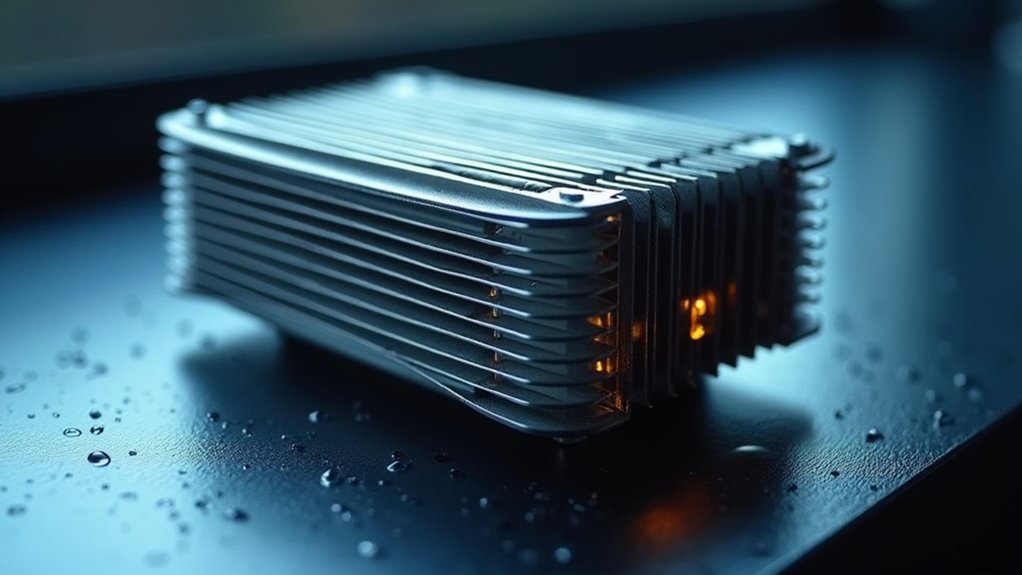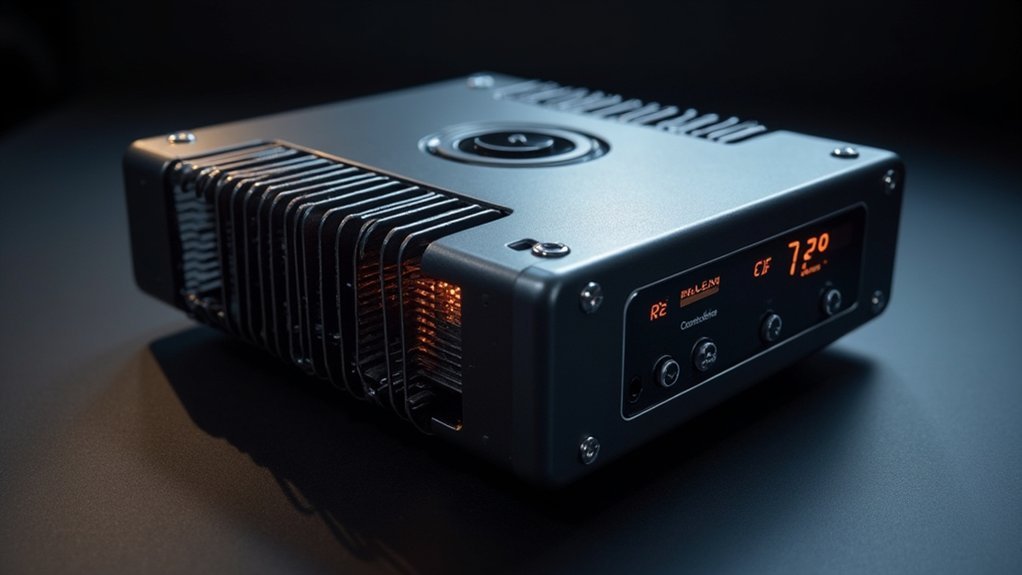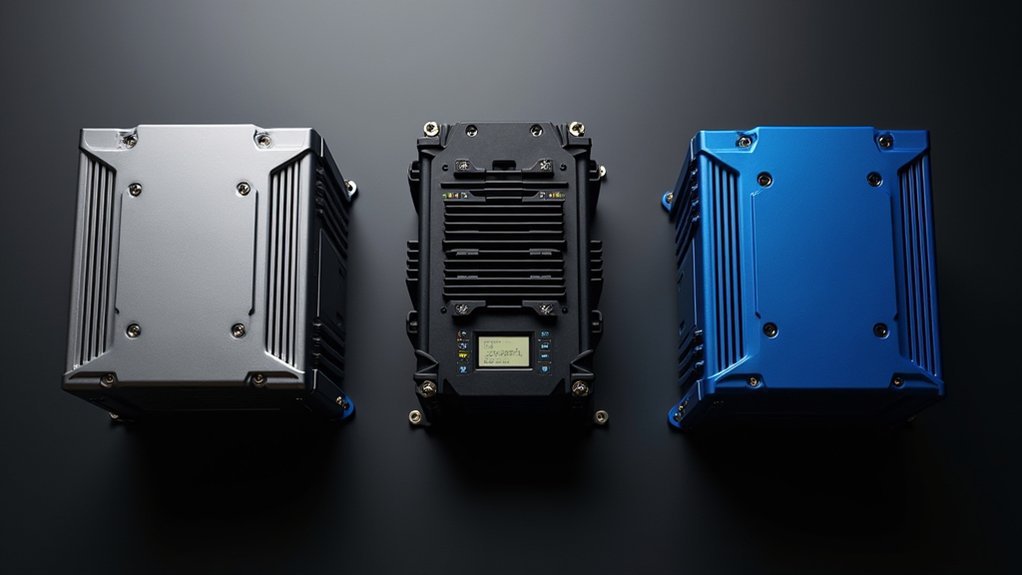You’ll find excellent camera cooling options under $1000 with high-performance Peltier systems that reduce sensor temperature by up to 30°C, budget-friendly passive cooling solutions using heat sinks, and temperature-regulated systems with digital controls that prevent condensation. All three greatly improve your signal-to-noise ratio for cleaner, more detailed images. The following detailed breakdown reveals which system might best suit your specific photography needs.
High-Performance Peltier Cooling Systems for Enhanced Image Quality

While many photographers focus solely on lenses and sensors, your astrophotography results can dramatically improve with a high-performance Peltier cooling system.
These systems can reduce your sensor temperature by up to 30°C, considerably minimizing dark current noise and enhancing overall image quality during long exposures.
For peak performance, you’ll need effective heat dissipation methods. Well-placed fans manage thermal output from the hot side of your Peltier element, preventing system inefficiency.
Look for models with PWM regulation that precisely control temperature without excessive power consumption.
The best systems maintain temperatures around 5°C above freezing—cool enough to reduce noise while preventing condensation issues.
This stability guarantees consistent calibration frame quality, improving your signal-to-noise ratio and producing cleaner, more detailed astrophotography images.
Budget-Friendly Passive Cooling Solutions for Microscope Cameras
Though often overlooked in scientific imaging, passive cooling solutions offer microscope camera users remarkable noise reduction without breaking the bank. By implementing a basic cooling system with heat sinks and thermally conductive materials, you’ll greatly reduce thermal noise during extended imaging sessions.
For under $1000, you can achieve impressive SNR improvements through DIY modifications to your existing setup. Advanced passive designs incorporating heat pipes efficiently transfer heat away from the sensor without requiring power—ideal for cost-conscious researchers.
These affordable solutions not only maintain more stable sensor temperatures during prolonged use but also enhance calibration frame accuracy, which is vital for scientific applications.
If you’re seeking better image quality without expensive active cooling, these passive alternatives deliver exceptional performance while keeping your budget intact.
Temperature-Regulated Camera Cooling Systems With Digital Control

Unlike passive solutions, digitally controlled temperature-regulated systems offer precision that transforms your imaging capabilities under $1000. These systems maintain sensor temperature at approximately 5°C above freezing, dramatically reducing noise during long exposures.
With digital control mechanisms like PWM regulation, you’ll optimize power delivery to Peltier coolers in the long run while preventing condensation issues—critical when shooting in humid environments or vertical positions.
| Feature | Benefit |
|---|---|
| Digital feedback | Maintains stable cooling temperatures |
| PWM regulation | Reduces power consumption |
| Condensation prevention | Protects optics and electronics |
| Smaller cooling fans | Minimizes vibration during imaging |
| Temperature presets | Customizes cooling for different conditions |
Implementing these systems with digital temperature sensors guarantees consistent performance, letting you capture crisp, noise-free images even during extended astronomical or microscopy sessions.
Frequently Asked Questions
What Is the Best Camera Under $1000?
For the best camera under $1000, you’ll find the Olympus OM-D E-M1X offers excellent value with versatile features. If you’re budget-conscious, consider the Nikon D5300 series for its solid performance and upgrade potential.
What Camera Has the Best Weather Sealing?
Among the models you’ve mentioned, the Canon EOS-1D X Mark III offers the most robust weather sealing. You’ll appreciate its professional-grade protection when shooting in harsh conditions, followed closely by the Nikon D850.
Why Do Cameras Need Cooling?
Cameras need cooling to reduce thermal noise during long exposures. You’ll get better images as cooling minimizes dark current noise, which doubles every 6°C. Your calibration frames will be more effective with consistent sensor temperatures.
What’s the Best Camera for the Money?
The best camera for your money depends on your needs. If you’re into astrophotography, the modified Nikon D5300 offers exceptional value, while the Olympus OM-D E-M1X provides superior cooling for extended shooting sessions.
In Summary
You’ve now explored three exceptional camera cooling systems under $1000. Whether you’re drawn to high-performance Peltier technology, budget-friendly passive solutions, or digitally controlled temperature regulation, there’s an option to meet your needs. Remember, proper cooling doesn’t just prevent overheating—it dramatically enhances image quality and extends your camera’s lifespan. Select the system that balances your budget with your specific imaging requirements.





Leave a Reply